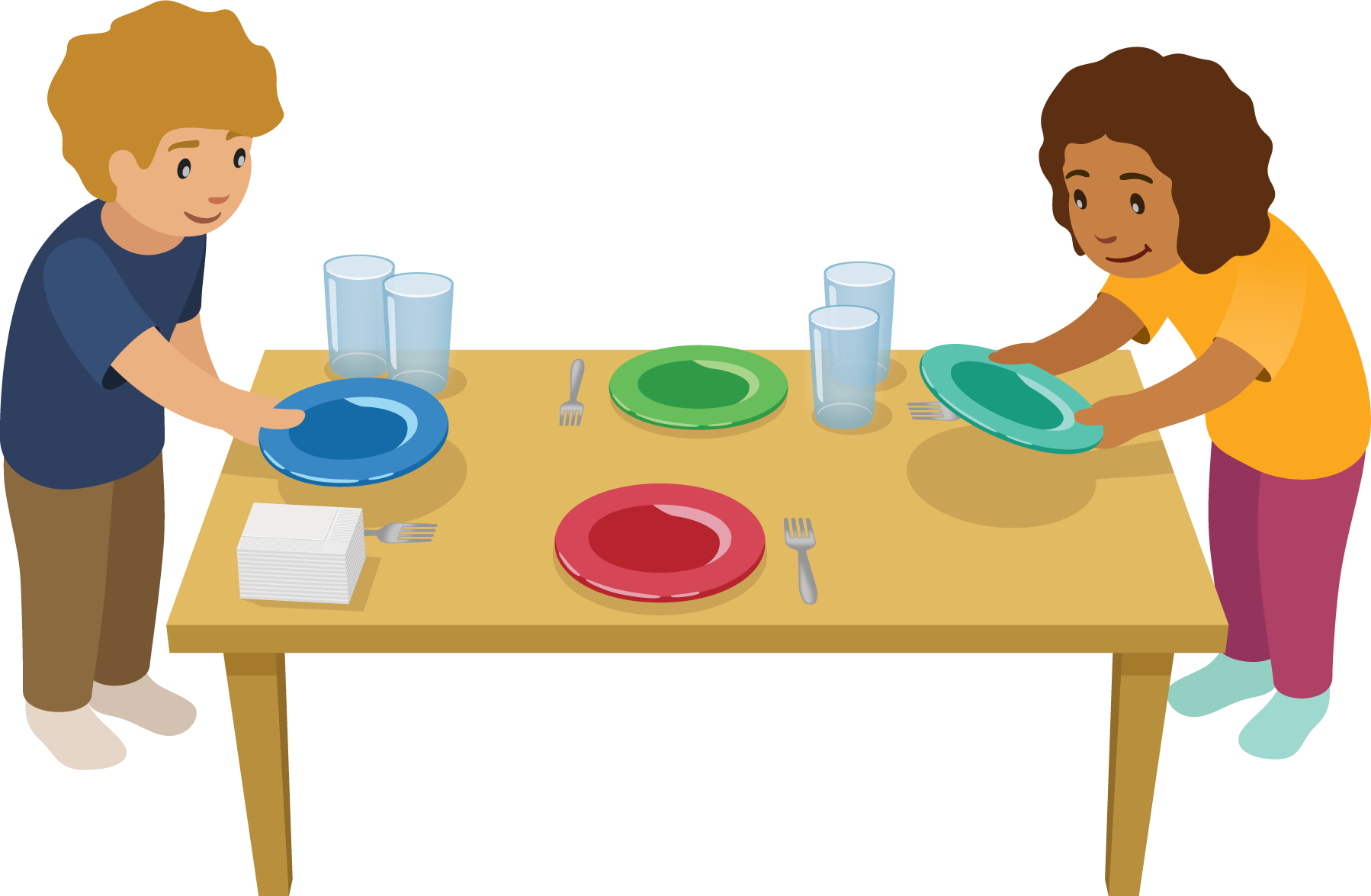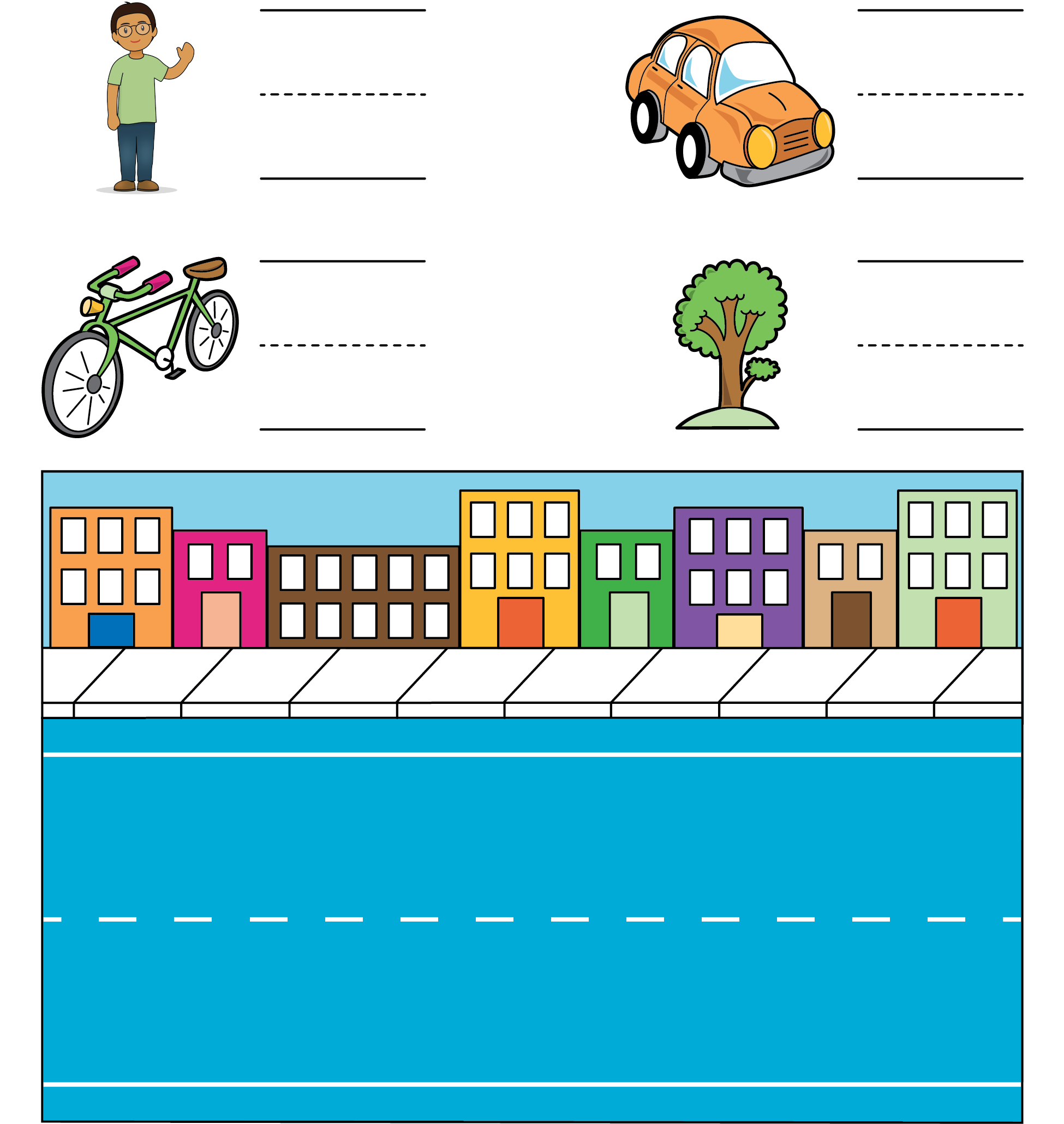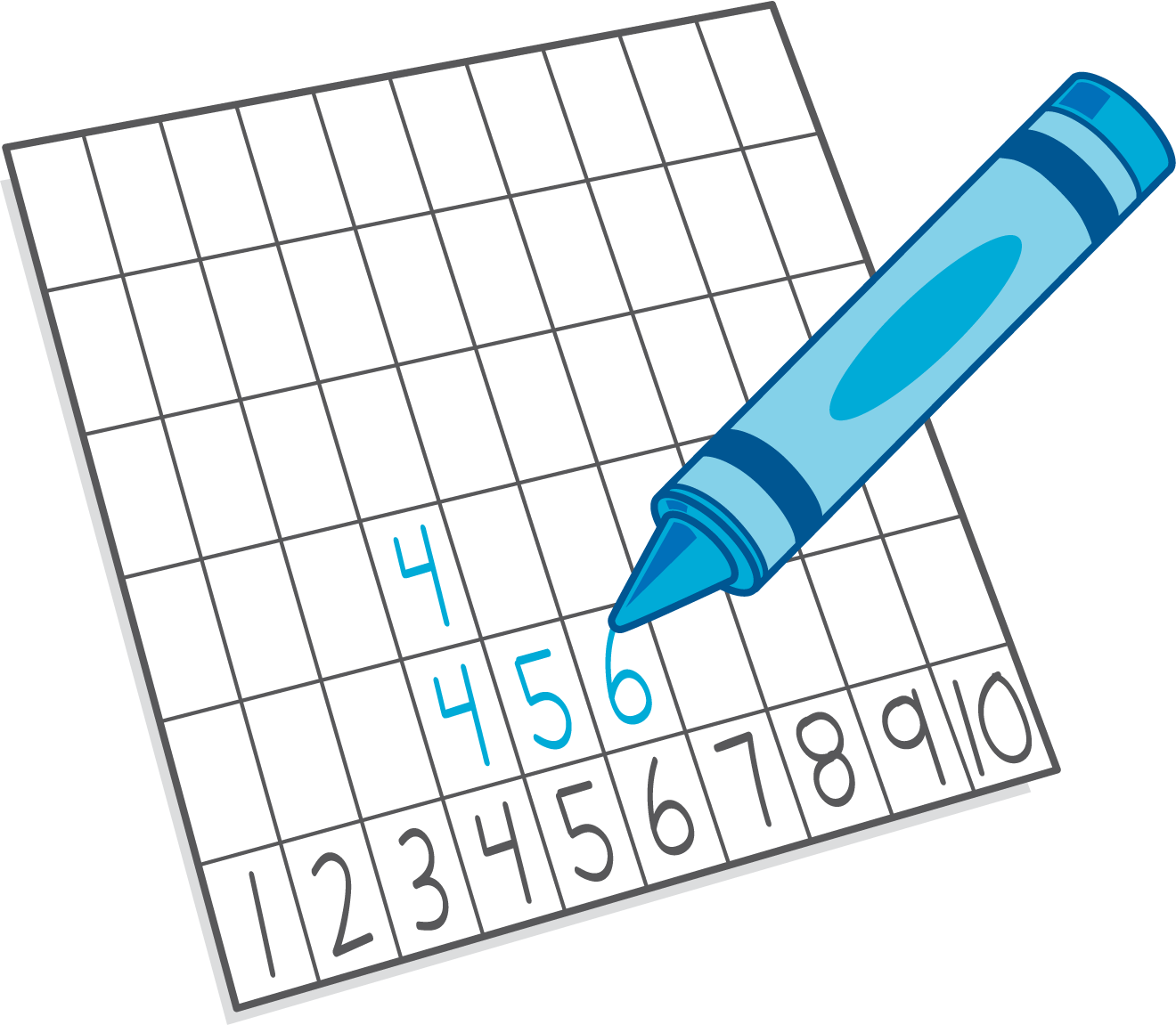Lesson 20
Represent and Compare Numbers
Warm-up: Act It Out: Plates and Cups for Dinner (10 minutes)
Narrative
The purpose of this warm-up is to allow students to connect language to mathematical representation, which will be useful when students need to compare quantities and numbers in later activities. In the synthesis, students have the opportunity to practice using the language “more” to compare quantities.
This warm-up gives students opportunities to make sense of a problem by acting it out first before thinking about how to solve the problem (MP1).
Launch
- Groups of 2
- Display and read the story.
- “What is the story about?”
- 30 seconds: quiet think time
- Share responses.
- Read the story again.
- “How can you act out this story?”
- 30 seconds: quiet think time
Activity
- “Discuss your thinking with your partner.”
- 1 minute: partner discussion
- Share responses.
- Choose a way to represent the story as a class.
- Read the story together.
Student Facing
Lin and her brother are setting the table for dinner.
Lin put 8 cups on the table.
Her brother put 6 plates on the table.
Did Lin or her brother put more things on the table?

Student Response
For access, consult one of our IM Certified Partners.
Activity Synthesis
- “Did Lin or her brother put more things on the table? How do you know?” (Lin put more things on the table. When we acted it out, there were 2 plates that did not have any cups, so there were more plates. 8 is more than 6.)
- “Tell your partner about 8 and 6 using ‘more.’” (8 is more than 6.)
- “8 plates is more than 6 cups. 8 is more than 6.”
Activity 1: Represent Numbers (10 minutes)
Narrative
The purpose of this activity is for students to represent a number from 1–10 in different ways. Students write the number, use objects to create groups, and draw groups of images. Students use these representations while they take a gallery walk in the next activity. Students use appropriate tools strategically as they choose which objects to use and how to organize them to represent their number (MP5).
Supports accessibility for: Social-Emotional Functioning
Required Materials
Materials to Gather
Required Preparation
- Each group of 2 needs 1 half sheet of chart paper.
Launch
- Groups of 2
- Give each group a half-sheet of chart paper and access to crayons or colored pencils and connecting cubes or counters.
- “Work with your partner to choose a number from 1–10 to show in many different ways.”
- 1 minute: partner discussion
- “Show your number in as many different ways as you can.”
Activity
- 5 minutes: partner work time
Student Response
For access, consult one of our IM Certified Partners.
Activity Synthesis
- “What are some different ways you and your partner showed your number?” (We counted out 5 cubes. We wrote the number 5. We drew groups of 5 images. We showed that it is 1 more than 4 and 1 less than 6.)
Activity 2: Gallery Walk: Different Representations (15 minutes)
Narrative
The purpose of this activity is for students to look at different representations of numbers 1–10 that their classmates made. Students compare two numbers, using the numbers or any of the representations on the charts. They make comparison statements using the words, "more", “less”, and “the same number.” When students share how they compare their numbers, they use their own mathematical vocabulary and listen to others' thinking (MP6).
Advances: Representing, Conversing
Launch
- Groups of 4
- Arrange the charts from the previous activity around the room in groups of 2.
- “We are going to go on a gallery walk. We will look at two charts showing different numbers that our classmates made. First, talk to your group about what number each chart shows. Then, compare the numbers using the words 'more', 'less', and 'the same number'.”
- “When you hear the signal, walk to the next group of charts and repeat.”
Activity
- 10 minutes: small-group work time
- After students have had about 3 minutes discussing their first set of charts, give the signal for them to move on.
- Repeat 3 times.
Student Response
For access, consult one of our IM Certified Partners.
Activity Synthesis
- Display 2 charts.
- “What number does each chart show?”
- “Compare the numbers using the words 'more', 'less', and 'the same number'.”
- Point to one of the charts and ask, “What number is 1 more than this number? What number is 1 less?”
Activity 3: Centers: Choice Time (20 minutes)
Narrative
The purpose of this activity is for students to choose activities that offer practice with number and counting concepts
- Less, Same, More
- Math Libs
- Number Race
Required Materials
Materials to Gather
Required Preparation
- Gather materials from:
- Less, Same, More, Stages 1-4
- Math Libs, Stage 1
- Number Race, Stage 1
Launch
- “Today we are going to choose from centers we have already learned.”
- Display the center choices in the student book.
- “Think about what you would like to do first.”
- 30 seconds: quiet think time
Activity
- Invite students to work at the center of their choice.
- 8 minutes: center work time
- “Choose what you would like to do next.”
- 8 minutes: center work time
Student Facing
Choose a center.
Less, Same, More

Math Libs

Number Race

Activity Synthesis
- “Think of a time when you were frustrated while you were working in centers. What did you do? Was it helpful?”
Lesson Synthesis
Lesson Synthesis
"Today we showed numbers in many different ways. We also compared numbers."
"During the gallery walk, how did you figure out which number was more? What things did other students include on their posters that helped you compare the numbers?"
“Let’s practice counting to 20.”
Demonstrate counting to 20. Count to 20 as a class 1–2 times.
Cool-down: Unit 2, Section C Checkpoint (0 minutes)
Cool-Down
For access, consult one of our IM Certified Partners.